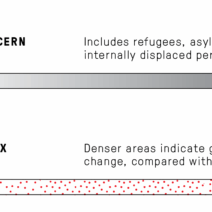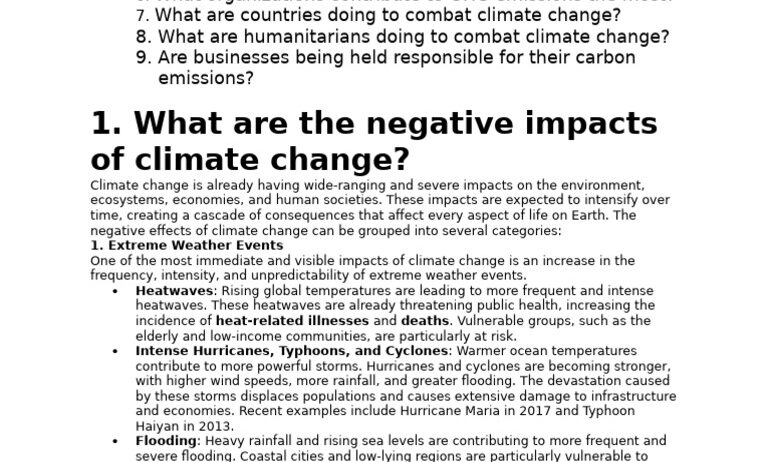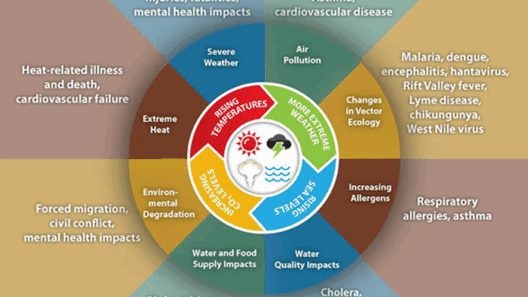The notion of a technological tipping point encapsulates the pivotal moment when an innovation becomes widely adopted, precipitating significant societal change and reshaping our interactions with the natural world. In the context of climate change, this phenomenon is particularly salient. As humanity grapples with the impending consequences of global warming, the innovations designed to combat these challenges gain unprecedented momentum. This interplay between technological advancement and ecological conservation reveals multifaceted dynamics that warrant exploration.
As the specter of climate change looms over industries, communities, and ecosystems, stakeholders from various sectors have recognized the urgency of transitioning away from carbon-intensive practices. Indeed, the consensus is growing: our dependence on fossil fuels must diminish if we are to mitigate the deleterious effects of climate change. Innovation, in this respect, serves as both a catalyst for compliance and a deterrent against destructive environmental practices.
The advent of renewable energy technologies exemplifies this transition. Innovations in solar, wind, and geothermal energy have rapidly evolved, enhancing their efficiency and decreasing their costs. The International Renewable Energy Agency (IRENA) reports a staggering decrease in the price of solar photovoltaic power by more than 80% since 2010. As these technologies approach cost parity with traditional energy sources, they achieve a critical mass that facilitates adoption across the globe. This phenomenon underscores a vital observation: the convergence of innovation and accessibility catalyzes a profound shift in energy paradigms, fostering a paradigm where sustainability reigns supreme.
Moreover, the evolution of energy storage solutions, particularly lithium-ion batteries, has been transformative. These advancements mitigate the inherent intermittency of renewable energy by providing reliable, on-demand power. Larger companies are now investing heavily in the development of next-generation batteries, which promise longer life cycles and quicker charging times. As energy storage becomes increasingly ubiquitous, the pernicious dependency on fossil fuels dissipates, paving the way for an electrified future.
However, technological solutions do not exist in isolation. They intersect with socio-economic factors and policy frameworks. Government incentives, subsidies, and regulations can either catalyze or stifle innovation. Countries that prioritize research and development in clean technologies—through financial backing and favorable policies—are often at the forefront of the green energy revolution. For instance, countries such as Denmark and Germany have implemented robust policies that promote renewable energies, resulting in an impressive increase in their respective contributions to the global energy mix.
The interplay between societal values and technological adoption reveals another layer of complexity. The increasing awareness concerning climate change has heightened public interest in sustainable practices. Grassroots movements and community initiatives have effectively galvanized support for innovations that combat global warming. Consequently, as public sentiment sways toward environmental responsibility, companies and governments are compelled to adapt to these preferences, thus amplifying the pace of technological advancement. This reciprocal relationship illustrates the power of collective action in driving innovation that addresses climate challenges.
Additionally, every innovation brings with it a unique set of challenges. Technological solutions must undergo rigorous testing, scalability assessments, and lifecycle analyses to ensure their environmental benefits outweigh potential drawbacks. The introduction of genetically modified organisms (GMOs) in agriculture, for instance, aims to enhance food security while minimizing the carbon footprint. However, such advancements often become embroiled in ethical debates and resistance from certain sectors of society. Thus, innovative approaches must navigate this complex web of ethical, environmental, and societal implications to ensure sustainable adoption.
Innovation in climate technologies extends beyond renewable energy and storage. Carbon capture and storage (CCS) technologies aspire to neutralize emissions from existing fossil fuel infrastructures. By sequestering carbon dioxide produced during energy generation, CCS could render fossil fuel use sustainable in the short term while we transition toward cleaner alternatives. Although still in the nascent stages of commercial viability, these technologies represent a potential inflection point in the climate narrative. Thus, investment in research and development is imperative to provoke the widespread adoption necessary to effectuate meaningful change.
Importantly, the role of digital technology in combating climate change cannot be understated. The rapid proliferation of information and communication technologies (ICT) facilitates enhanced data collection, climate modeling, and predictive analytics. Such innovations empower decision-makers with the insights necessary to formulate effective climate policies. Furthermore, the rise of smart technologies, including those embedded in infrastructure and urban planning, optimizes resource use, thereby mitigating waste and improving energy efficiency. Communities equipped with smart grids, for example, can actively manage energy consumption, demonstrating a capacity for managing climate impacts while fostering resilience.
However, as we journey towards a future defined by technological advancements, it is paramount to acknowledge the potential for unintended consequences. The allure of innovation can sometimes overshadow the need for a comprehensive understanding of ecological systems. A singular focus on technological fixes may divert attention from broader systemic changes required to address climate change. It is essential to emphasize holistic, integrative strategies that marry technological innovation with behavioral and institutional shifts to cultivate a resilient, sustainable society.
Ultimately, the path toward a sustainable future hinges upon the synergistic relationship between technological innovation and climate action. By recognizing the profound interdependencies between these domains, stakeholders can harness the power of innovation to combat global warming effectively. The pressing need for change mandates that we not only embrace technological advancements but also cultivate a culture of sustainability that fosters collaboration across disciplines, communities, and nations. The convergence of innovation and ecological stewardship will create not just a tipping point, but a paradigm shift that ultimately defines our trajectory in the face of mounting environmental challenges.







